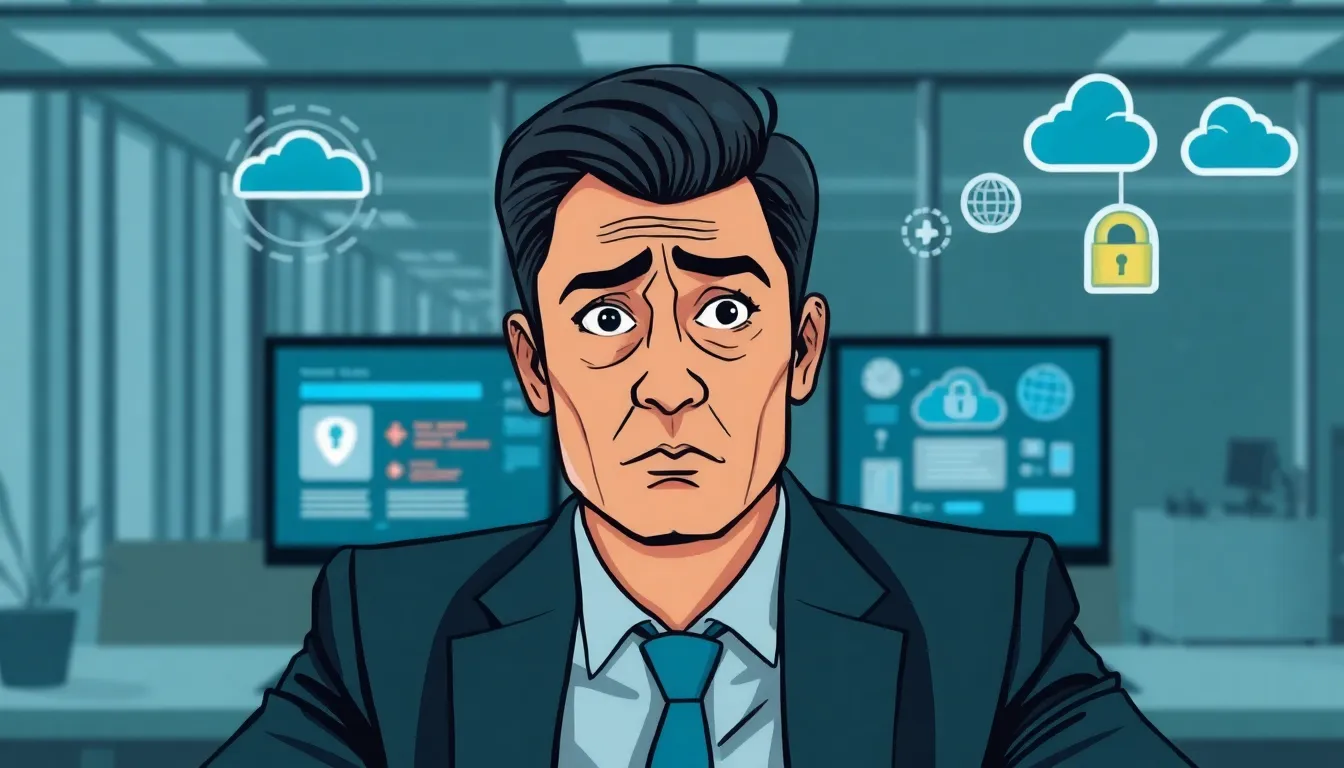Table of Contents
ToggleIn a world where data breaches are as common as cat videos, understanding SaaS network security is more crucial than ever. Businesses rely on Software as a Service to streamline operations, but with great convenience comes great responsibility. It’s like inviting a raccoon to your picnic—sure, it’s cute, but you don’t want it rummaging through your snacks, right?
Overview of SaaS Network Security
SaaS network security focuses on protecting data, applications, and users accessing cloud-based services. Organizations increasingly rely on Software as a Service for efficiency, but they face heightened risks from cyber threats. Security measures must prioritize safeguarding sensitive information against unauthorized access or data breaches.
Data encryption serves as a fundamental component. Encryption ensures that information remains unreadable to unauthorized users, providing an extra layer of protection during transmission and storage. When querying service providers, organizations should verify their encryption protocols and key management practices.
Access control is another critical element. Implementing identity authentication mechanisms helps ensure that only authorized personnel can access sensitive systems. Multi-factor authentication adds a further layer of security, actively reducing the risk of account compromise.
Security monitoring enhances visibility into potential threats. Continuous monitoring of network traffic allows organizations to detect unusual behavior quickly. Employing automated tools can assist in identifying vulnerabilities, enabling proactive responses to mitigate risks.
Data loss prevention tools play a vital role as well. These tools monitor and control data transfers, preventing accidental leaks or intentional data theft. By integrating data loss prevention strategies into their security frameworks, organizations can maintain tighter control over their information.
Compliance with regulations strengthens the overall security posture. Many industries are subject to specific legal requirements regarding data protection. Organizations must familiarize themselves with applicable regulations to avoid potential fines and reputational damage.
Regular assessment of security policies and practices ensures they remain effective. Performing routine vulnerability assessments and penetration testing helps identify weaknesses in the SaaS environment. Continuous improvement fosters a robust security infrastructure, allowing organizations to stay ahead of evolving threats.
Key Threats to SaaS Network Security

Understanding the major threats to SaaS network security is essential as organizations increasingly rely on cloud-based applications. Several key threats pose significant risks to these environments, including data breaches, account hijacking, and insider threats.
Data Breaches
Data breaches occur when unauthorized individuals gain access to sensitive information stored in SaaS applications. These incidents can happen through various means such as weak passwords, inadequate encryption, or phishing attacks. A report by IBM reveals that the average cost of a data breach in 2023 reached $4.45 million. Organizations face serious risks, including financial loss, legal repercussions, and reputational damage that can result from exposed customer data.
Account Hijacking
Account hijacking represents another critical threat within SaaS environments. This occurs when attackers compromise user credentials to take control of accounts. Attackers might leverage various techniques such as credential stuffing or phishing to access accounts. Once an account is compromised, the attacker can manipulate data, steal sensitive information, or disrupt services. Organizations should implement multi-factor authentication and regular password updates to guard against this threat as it significantly reduces the potential for unauthorized access.
Insider Threats
Insider threats can arise from employees, contractors, or partners with legitimate access to SaaS applications. Malicious insiders may misuse their access to steal or damage sensitive data intentionally. Alternatively, negligent insiders may inadvertently expose information through careless behavior or inadequate security practices. The 2023 Insider Threat Report highlights that insider threats account for 34% of all data breaches. Companies must promote a culture of security awareness, implement strict access controls, and conduct regular training to mitigate the risks associated with insider threats.
Best Practices for Enhancing SaaS Network Security
Implementing best practices enhances SaaS network security. Organizations must take proactive steps to secure their data and applications effectively.
Strong Authentication Measures
Utilizing multi-factor authentication significantly strengthens user access protection. This method combines something users know, like a password, with something they have, such as a smartphone. Regularly updating passwords mitigates the risk of unauthorized access. Enforcing strict password policies, including complexity and expiration, further safeguards user accounts. Companies benefit from adopting Single Sign-On solutions, allowing users to access multiple applications with one set of credentials while ensuring security.
Data Encryption Techniques
Employing advanced encryption techniques protects sensitive information stored and transferred through SaaS applications. Encryption transforms data into unreadable formats, making it inaccessible to unauthorized individuals. Organizations must encrypt data both at rest and in transit to achieve optimal security. Utilizing AES (Advanced Encryption Standard) protocols and TLS (Transport Layer Security) protocols ensures strong encryption practices. Mandating regular updates to encryption methods in response to evolving threats is crucial for maintaining data integrity and confidentiality.
Regular Security Audits
Conducting regular security audits plays a pivotal role in identifying vulnerabilities within SaaS environments. These audits allow organizations to evaluate existing security measures and determine their effectiveness. Tracking compliance with industry standards, such as GDPR or HIPAA, helps organizations avoid legal repercussions. Strengthening security policies based on audit findings facilitates continuous improvement. Engaging third-party experts for independent assessments enhances the overall security posture, ensuring organizations remain one step ahead of potential cyber threats.
Future Trends in SaaS Network Security
Artificial intelligence continuously shapes SaaS network security strategies. Organizations increasingly deploy AI-powered tools to automate threat detection and response. These tools analyze vast amounts of data, identifying anomalies that signify potential breaches. Innovations in machine learning enhance prediction capabilities, helping prevent attacks before they occur.
Zero trust architecture is gaining traction in SaaS environments. This model operates on the principle of “never trust, always verify.” Organizations implementing zero trust require continuous verification for all users, regardless of location. Such an approach significantly reduces the risk of insider threats and unauthorized access.
Increased regulatory scrutiny drives organizations to adopt more robust security frameworks. Compliance requirements evolve, demanding adherence to strict data protection standards. Businesses that emphasize regulatory compliance not only enhance their security posture but also improve customer trust.
Additionally, the rise of remote work necessitates a shift in security focus. Employees accessing SaaS applications from various locations create new vulnerabilities. Companies are prioritizing secure access technologies, including VPNs and secure web gateways, to protect sensitive data in transit.
Blockchain technology holds potential for enhancing data integrity in SaaS. By providing a decentralized ledger, blockchain can offer transparency and traceability, making data manipulation difficult. Organizations exploring this technology may find it beneficial for securing transactions and maintaining audit trails.
Cloud-native security tools are expanding in functionality and adoption. These tools integrate seamlessly into existing SaaS platforms, allowing for real-time security assessments. Continuous monitoring and automated compliance checks simplify the enforcement of security policies.
The emphasis on user education remains paramount. Security awareness training helps employees recognize threats such as phishing attacks. Organizations that invest in regular training sessions empower users to contribute to a secure SaaS environment.
Overall, the future of SaaS network security hinges on innovation, compliance, and proactive measures. Organizations must adapt to these trends to safeguard their digital assets effectively.
SaaS network security is a critical aspect of modern business operations. As organizations increasingly adopt cloud-based solutions, they must prioritize robust security measures to protect their data and applications from evolving cyber threats. Implementing strong authentication methods and data encryption is essential for safeguarding sensitive information.
Moreover, fostering a culture of security awareness among employees can significantly reduce the risk of insider threats and account hijacking. Staying informed about regulatory requirements and conducting regular security audits will help organizations maintain compliance and enhance their security posture.
By embracing innovative technologies and proactive strategies, businesses can effectively navigate the complexities of SaaS network security and ensure the protection of their digital assets.



